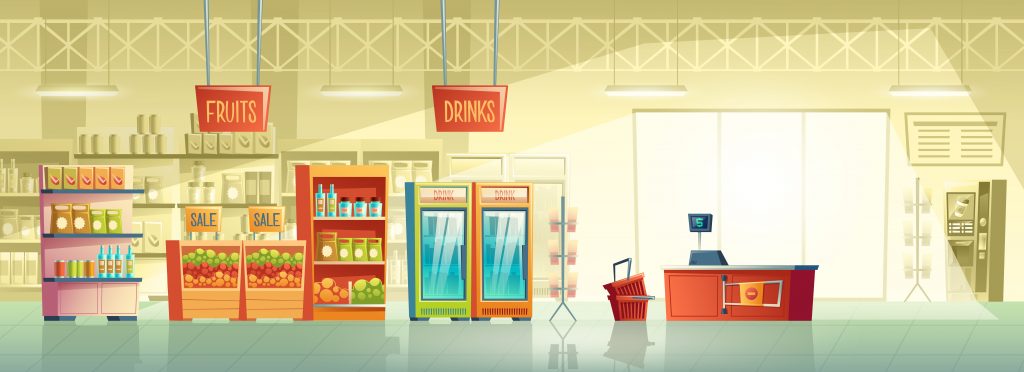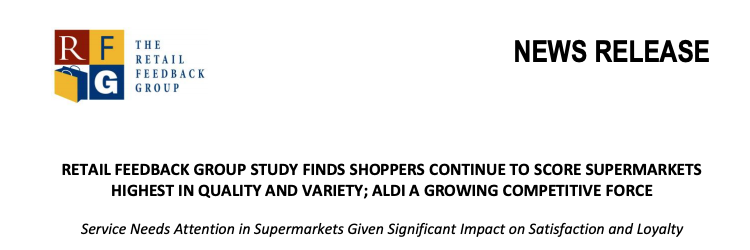
Price is no longer the first thing that a customer looks at in supermarkets. Listening to the Voice of the Customer to identify the strengths and weaknesses of any business is fundamental when applying efficient retention techniques.
In the sector for food and basic amenities, the competition is fierce, and the consumer has numerous alternatives within range. If a sales point is incapable of satisfying every aspect, the risk of losing out is high.
Negative criticism regarding quality, empty shelves, uninteresting offers, or similar, should be immediately addressed with correction methods. Especially if we consider that 73% of customers are informed about commercial facilities prior to visiting them and said information is easily accessible on forums and social media.
More still, the risk is additionally heightened due to the fact that satisfied customers rarely trouble themselves to publicly demonstrate their approval, rather, it is when something does not comply with expectations or bothers them, they then take the time to divulge their opinion in order to denounce the service and warn other potential “victims”.
According to a number of studies carried out in the groceries and household product division of the retail sector, customers of prominent supermarket chains take other factors into account prior to a product’s price when deciding where to shop. Likely, a consequence of the end of the economic recession that has affected the western world in the last decade, this trend can be seen emerging in various countries.

The report entitled ‘U.S Supermarket Experience 2019’, published in the month of January by ‘The Retail Feedback Group’, demonstrates that clients primarily evaluate supermarkets and department stores, such as Aldi, Costco, Kohl’s and Walmart, based on the quality and variety of their products. Although it is reported by surveys that customer care and its related services are not the most prominent factors considered, this is not to say they do not influence the general measurement of satisfaction in a relevant way. On the other hand, whilst obtaining the lowest relevance score among all the components, relative to customer experience, that were analyzed; the price of a product becomes increasingly important specifically when the focus is on offers and coupons (alluding to the fact that customers reevaluate the value they place on a product’s price solely when prompted to consider supermarket offers).
Although the pricing policy of a supermarket chain will continue to be a determining factor in attracting and retaining customers, data shows that other characteristics perceived as equally important, are frequently valued more and dissimilarly cannot be overlooked by the marketing strategies of each chain. A competitive price attracts customers, but what is it that holds them back? The response to this question is not straightforward, especially if we take into account that over the last years, matters such as environmental compromise, and technological and infrastructural innovation (1-Click Ordering, home delivery, underground parking, to name a few) have gained societal importance.
You only have to take a brief look at internet forums or customer service accounts of supermarket chains on social networks to see: thousands of complaints about thousands of distinct reasons. How many times have we seen a complaint in the form of a tweet republished on a television program? Wouldn’t it be better to avoid them? Evidently, the response is yes and only one solution exists to improve what doesn’t work.
Voice of Customer Analysis has shown us that to obtain useful results when consolidating or reorienting a business strategy it is vital to be capable of detecting the peculiarities of a specific domain, both in a linguistic and conceptual way, taking into account the identifying characteristics of the brand to be analyzed. For this reason, we have not only developed an analysis model focused on the retail trade, but we have also adapted analytical tools towards the sale of groceries, personal care and homecare in the retail sector.
Voice of the Customer in Retail Demo
At MeaningCloud, we know how important unstructured data is for the Voice of the Customer analysis , so we’ve defined a model focused on the retail domain that will allow you to characterize in detail any feedback from your customers, enabling you to carry out an in-depth analysis to identify the customer’s wants and needs in an organized way.
Try our free Demo of Voice of the Customer Analytics for Retail!


